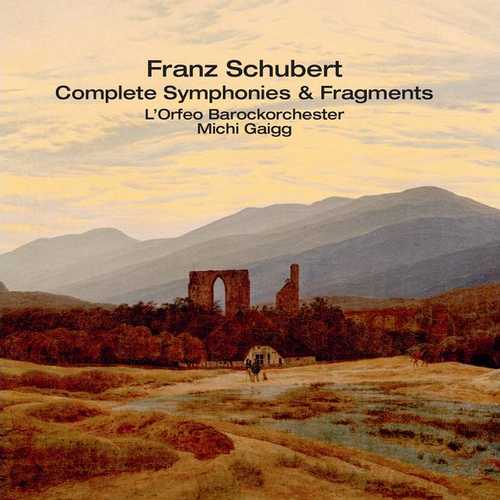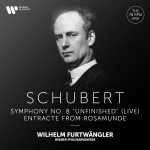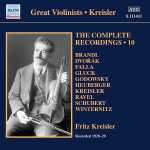
Composer: Franz Peter Schubert
Orchestra: L’Orfeo Barockorchester
Conductor: Michi Gaigg
Number of Discs: 4
Format: FLAC (tracks)
Label: CPO
Catalogue: 555228-2
Release: 2021
Size: 1.5 GB
Recovery: +3%
Scan: yes
CD 01
Symphony No. 1 in D major, D82
01. I. Adagio – Allegro vivace
02. II. Andante
03. III. Menuetto. Allegretto – Trio
04. IV. Allegro vivace
05. Overture in D Major, D. 2a (Fragment)
06. Symphony in D Major, D. 2b (Fragment)
07. Overture in D Major, D. 2g (Fragment)
08. Orchestral Piece in D Major, D. 74a (Fragment)
09. Orchestral piece in D Major, D. 71c (Fragment)
Symphony No. 2 in B flat major, D125
10. I. Largo – Allegro vivace
11. II. Andante
12. III. Menuetto. Allegro vivace – Trio
13. IV. Presto vivace
14. Orchestral piece in B-Flat Major, D. 94a (Fragment)
CD 02
Symphony No. 3 in D major, D200
01. I. Adagio maestoso – Allegro con brio
02. II. Allegretto
03. III. Menuetto. Vivace – Trio
04. IV. Presto vivace
Symphony No. 5 in B flat major, D485
05. I. Allegro
06. II. Andante con moto
07. III. Menuetto. Allegro molto – Trio
08. IV. Allegro vivace
Symphony No. 8 in B minor, D759 ‘Unfinished’
09. I. Allegro moderato
10. II. Andante con moto
11. III. Scherzo. Allegro (Fragment)
CD 03
Symphony No. 4 in C minor, D417 ‘Tragic’
01. I. Adagio molto – Allegro vivace
02. II. Andante
03. III. Menuetto. Allegro vivace – Trio
04. IV. Allegro
Symphony No. 6 in C major, D589
05. I. Adagio – Allegro
06. II. Andante
07. III. Scherzo. Presto – Piú lento
08. IV. Allegro moderato
Symphony No. 7 in E Major, D. 729
09. I. Adagio – Allegro
CD 04
Symphony No. 9 in C major, D944 ‘The Great’
01. I. Andante – Allegro ma non troppo
02. II. Andante con moto
03. III. Scherzo. Allegro vivace – Trio
04. IV. Allegro vivace
Schubert Symphonies – Now really complete. On the occasion of its twenty-fifth anniversary, the L’Orfeo Baroque Orchestra is releasing the present recording of Franz Schubert’s complete symphonies and complete symphonic fragments. It is the most recent gem in this orchestra’s multifaceted repertoire ranging from the suite of the French, German, and Austrian Baroque through the sinfonia of the Mannheim School to Viennese Classicism and Early Romanticism.
Although Joseph von Spaun termed Schubert a »song composer« not long after his death, Schubert’s compositional oeuvre may be said to be framed by a symphonic fragment and a sketch for a symphony. The first of these fragments was the score for an overture (D. 2A) committed to paper around 1810-11 and abandoned in the middle of the exposition, and the last was a draft of three movements for a Symphony in D major (D. 936 A), largely worked out in full, from the last weeks, if not from the last days, of his life.
During the period of some eighteen years between these two manuscripts, Schubert occupied himself creatively with almost all the established forms, ensembles, and genres. The symphonic fragments heard here often consist of scores containing only a few measures with the later addition of the instrumentation of a piece, for example, measures 209 to 223 from the first movement of the String Quartet D. 74. Since the composer assigned the date »3 September 1813« to this movement following its final notes, he must have written the fragment immediately prior to beginning his work on the Symphony No. 1 in D major, D. 82.



